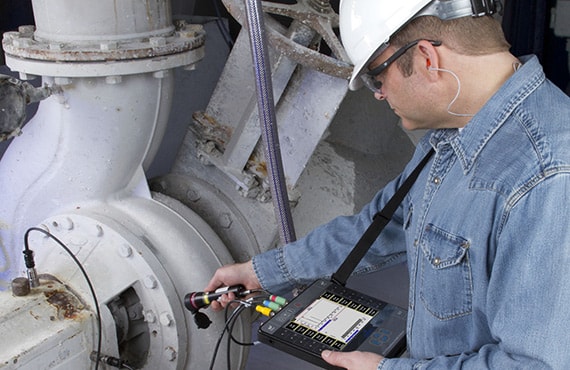ISO 9227 – Salt Spray Corrosion Test
The ISO 9227 salt spray corrosion test is a crucial method used to assess the resistance of materials, coatings, and protective treatments against corrosive environments. This test simulates the effects of salt-laden atmospheres commonly found in coastal areas or industrial environments with high humidity levels. It’s widely recognized for its ability to predict long-term performance under harsh environmental conditions.
The process involves exposing specimens to a continuous mist composed primarily of sodium chloride (NaCl) solution, which mimics atmospheric salt spray conditions. Specimens are typically held at specific temperatures and relative humidities while being sprayed with the salt solution. The test duration can vary from a few hours up to several weeks depending on the required level of confidence in the corrosion resistance performance.
Materials commonly tested include metals like steel, aluminum, zinc, and their alloys; coatings such as paints, varnishes, and sealants; and various protective treatments. This test is particularly important for industries reliant on durable materials exposed to salty atmospheres, including oil & gas, aerospace, automotive, and maritime sectors.
The testing setup usually comprises a chamber that maintains controlled environmental conditions. Inside this chamber, the salt spray is generated by atomizing a NaCl solution using compressed air or other suitable means. The chamber’s interior ensures uniform distribution of the mist to provide consistent exposure across all specimens within the test batch.
Specimen preparation plays a critical role in ensuring accurate testing results. Prior to exposure, specimens should be cleaned and degreased thoroughly to remove any contaminants that could interfere with the test outcome. If necessary, the surface finish of the specimen can also be modified by sandblasting or grit blasting to ensure uniformity.
The acceptance criteria for ISO 9227 tests are based on visual inspection after exposure. Specimens are rated according to their degree of corrosion using predefined categories such as “no visible change,” “slight pitting,” “moderate pitting,” and so forth, up to severe pitting or complete failure. This categorization allows for a clear comparison between different materials or treatments.
The test results provide valuable insights into the durability and reliability of materials used in various industries. For instance, oil & gas companies can use this information to select corrosion-resistant materials suitable for offshore platforms located near coastlines where salt-laden environments are common.
Understanding the principles behind ISO 9227 helps quality managers and compliance officers make informed decisions about material selection and treatment processes. By incorporating these tests into their quality assurance programs, they can ensure that products meet regulatory requirements and perform reliably under challenging conditions.
Scope and Methodology
The ISO 9227 salt spray corrosion test is designed to evaluate the resistance of materials, coatings, and protective treatments against corrosive environments. This standard specifies the procedure for conducting salt spray tests in a controlled laboratory setting.
- Test Chamber: A closed or open chamber capable of maintaining precise temperature and humidity levels.
- Mist Generation: Continuous mist composed primarily of sodium chloride (NaCl) solution generated by atomizing the liquid using compressed air.
- Specimen Placement: Specimens are suspended inside the chamber to ensure uniform exposure to the salt spray. They can be arranged in racks or trays depending on the test setup.
- Test Duration: The duration of the test depends on the desired level of confidence but typically ranges from a few days up to several weeks.
The test begins with preparation of the specimens, including cleaning and degreasing if necessary. Once prepared, the specimens are placed into the chamber under controlled environmental conditions. During testing, regular checks ensure that all parameters remain within specified limits.
At the end of the prescribed exposure period, the specimens undergo visual inspection to assess any signs of corrosion. The extent of corrosion is categorized according to predefined standards, providing a clear indication of how well each material or treatment performed during the test.
The results from these tests are essential for selecting materials and treatments that offer superior protection against corrosive environments. This information can be particularly useful in industries where durability under harsh conditions is critical, such as oil & gas exploration and production activities conducted near coastlines.
International Acceptance and Recognition
- Australia: The Australian Standard AS 1596.3 specifies the procedure for salt spray testing, aligning closely with ISO 9227 standards.
- New Zealand: New Zealand’s standard NZS 4080:2007 incorporates the ISO 9227 methodology in its guidelines for evaluating corrosion resistance.
- European Union: EU directives often reference ISO 9227 as a benchmark when specifying requirements for materials and coatings used in various industries.
- United States: ASTM B117 is another widely accepted standard that closely mirrors the principles of ISO 9227, ensuring consistency across international markets.
The widespread adoption of these standards reflects their importance in global quality assurance and regulatory compliance. Laboratories adhering to such standards ensure consistent and reliable test results recognized worldwide.
Use Cases and Application Examples
In the oil & gas industry, ISO 9227 tests are essential for evaluating the durability of materials used in offshore platforms located near coastlines. These environments expose structures to constant salt-laden conditions, making corrosion a significant concern. By conducting regular ISO 9227 tests, companies can ensure that their equipment remains robust and reliable over extended periods.
Similarly, aerospace manufacturers rely on these tests to select materials capable of withstanding the corrosive effects encountered during long-term storage or operation in coastal regions. In maritime applications, such as shipbuilding, ISO 9227 helps verify that coatings applied to hulls provide adequate protection against marine corrosion.
The use cases extend beyond just material selection; manufacturers also employ this test throughout their product lifecycle—from R&D phases to final quality assurance checks. By integrating ISO 9227 into their processes early on, they can identify potential issues and optimize designs for better performance under challenging conditions.





